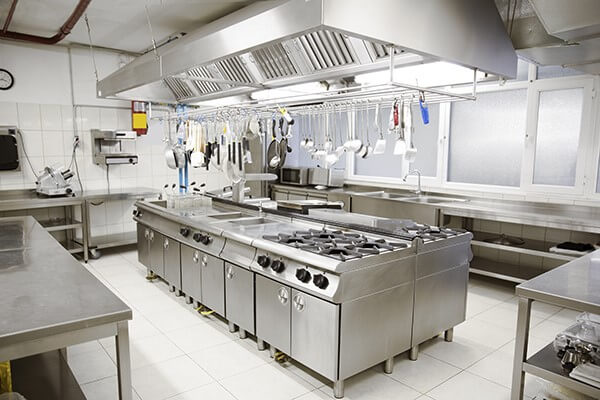Ways Of Making Commercial Kitchens Run Smoothly
Running a commercial kitchen is quite different from managing a domestic one. Larger volumes of food are handled at any one time and the kind of tasks are done to a greater degree or differently altogether. Ultimately, you want a great margin from your business, and organization in the heart of the restaurant-the kitchen-is key. In that case, it is necessary, before setting one up.
Running a commercial kitchen is quite different from managing a domestic one. Larger volumes of food are handled at any one time and the kind of tasks are done to a greater degree or differently altogether. Ultimately, you want a great margin from your business, and organization in the heart of the restaurant-the kitchen-is key. In that case, it is necessary, before setting one up, or if you want to improve how a current one works, to consider a few aspects.
1. Layout
The work zones of a kitchen are the prep zone, cooking zone and cleanup zone according to Garden web. Food is prepared in the cook zone, and preparation in this context includes the cleaning, mixing or processing of the food. The cooking zone is where the stove is. The cleaning zone is where dishes are cleaned. The layout you choose should give you easy and equal access to all three of them, while according lots of space for employees to move about. This translates to higher speed in preparation, delivery and even storage of food.
2. Organization
Related
The number of utensils handled are obviously quite many, and it would be necessary to have custom made exclusive storage spaces to handle different types of crockery and dishes separately, so that preparation and service moves at a pleasantly fast pace.
A Cooling unit must be installed to preserve food. Other smaller units or refrigerators can be added to store other food, cooked or uncooked.
3. Design
It is always best to have your kitchen custom made to suit whatever kind of cooking you do. A cake store for example, would have wider and more counters all around the kitchen as baking surfaces, and several holding areas on the walls for ovens. This would differ from a tapas bar or a steak house where more grilling is done.
4. Equipment
Have fire equipment in the form of fire extinguishers ready. Being a large edifice with many people working with heat at any one time, the chances of the kitchen catching fire are quite high. Sanitation equipment is mandatory and should be the first consideration. Sanitation may be done using heat or chemicals. A kitchen needs to be spotless all the time anyway, not to compromise the safety of the food and transmit infections. The Australian New Zealand Food Standards Code(ANZFSC) in addition, requires that any kitchen set up for commercial purposes has to have a constant supply of potable water.
5. Ventilation
The ANZFSC clearly states that Food premises must have sufficient mechanical or natural ventilation to effectively remove smoke, fumes, vapors and steam from the premises.
6. Garbage And Drainage Systems
Garbage and recycling cans must be covered all the time and proper concealed drainage systems installed in discrete locations in the kitchen. The material must be safe and top grade quality.
7. Equipment
Install ergonomic appliances that make it easy for the employees to do their work excellently but comfortably at the same time. Soft grip knives, comfortable stools if any with adequate and generous back support are only two of the countless number of ideas you could pick up.
Above all, the lighting is key. A well-lit work area, needless to say, increases productivity.
Choose a reputable commercial kitchen installation firm that adheres to regulations set out in the Occupational Health, Safety and Welfare Act as an example, and one that designs and constructs only top grade kitchens.









0 Response to "Ways Of Making Commercial Kitchens Run Smoothly"
Post a Comment